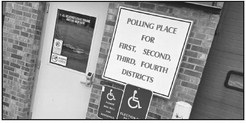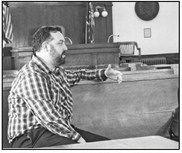Decision to open schools should be a local and regional one
It should be up to local school districts in consultation with county and regional public health officials to decide if schools should open in person this September.
Teacher’s unions in the state’s five largest school districts are calling on Gov. Tony Evers to prevent in-person schooling from starting this fall. Evers and the state Department of Health Services (DHS) had ordered schools to be closed in March to try to slow the transmission rate of COVID-19.
Since March, the pandemic has sickened 43,018 Wisconsin residents. Of that total 846 people have died while 33,130 have recovered. There are currently 9,037 active cases in the state, a number that has been steadily growing in recent weeks. In Taylor County, the number of cases took a 30% jump last week and there are currently 34 confirmed cases.
Teacher’s union representatives from Green Bay, Kenosha, Madison, Milwaukee, and Racine have called for school to start virtually this fall rather than have in-person instruction, stating that cases of COVID-19 are “surging.”
While there should always be an abundance of caution in dealing with potential public health risks, especially when children are involved, a one-size-fits all approach does a disservice to students in more rural portions of the state.
Area school districts have been working diligently to ensure the safe return of students to the buildings this fall. Having the state impose a blanket closure at this point would throw these plans into disarray and bring even more uncertainty to students and their families.
While online instruction has its merits and is good for some students, traditional classroom instruction continues to form the backbone of educational instruction across the country. As evidenced during last spring’s school closures, teachers stepped up to the challenge of helping students learn. There is little doubt teachers would do the best job possible given the circumstances. What remains in doubt is how prolonged school closures would impact the quality of education and learning for the students.
Many families in rural portions of the state are starting at a disadvantage by not having access to high speed internet needed for most computer-based programs. There is also a real concern about access to safe and affordable childcare during the school day if in-person classes do not resume as scheduled. This additional cost would present a significant burden on families at a time when many continue to struggle. While a blanket approach made some sense last spring when information on how COVID-19 spreads and the risks involved were largely unknown, in the months since there have been many advances in understanding the virus.
The state should save school closures as a last line of defense if an outbreak occurs and otherwise should leave it up to local districts to decide what is best for their communities.




